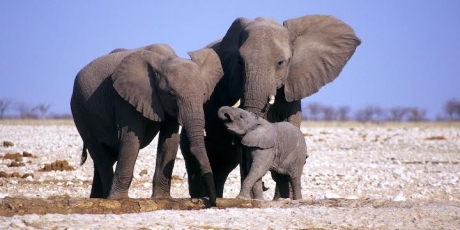- About
- Topics
- Picks
- Audio
- Story
- In-Depth
- Opinion
- News
- Donate
- Signup for our newsletterOur Editors' Best Picks.Send
Read, Debate: Engage.
| topic: | Conservation |
|---|---|
| located: | Thailand |
| editor: | Jitsiree Thongnoi |
In 1977, at Thailand's Khao Yai National Park, a famous camping and trekking destination 200km northeast of Bangkok, a young girl who lived in the staff dormitory of the park stepped out of her house one evening to retrieve a pencil she had left there. A tiger, waiting in darkness, then fatally attacked her and was killed by the park's rangers later on.
The story's integrity cannot be wholly verified. Still, today, visitors are met with the taxidermy of that tiger at the park's office, which was said to be the last one to have existed in Khao Yai until recently.
In 2022, the Thai government reported camera traps spotted 15 tigers in Unesco-listed Dong Phayayen–Khao Yai Forest Complex, part of Khao Yai National Park.
The Thai authorities have installed camera traps in the wilderness to keep track of the number of wild animals and to document their behaviour. These camera traps have captured footage of a family of tigers, which includes newborn cubs. This footage confirms that the area is the territory of these tigers, as they have made it their home due to the abundance of food, water, and safety.
It also marks a success in the country's tiger conservation effort, which began with a Thailand Tiger Action Plan issued in 2010. The government aims to be a regional leader in tiger conservation by 2034.
There is a sense of urgency in tiger conservation. At the turn of the 20th century, tigers were on the brink of extinction, with the global population dropping from approximately 100,000 to as low as 3,200 in 2010.
In 2010, the leaders of 13 tiger range countries: Bangladesh, Bhutan, Cambodia, China, India, Indonesia, Lao PDR, Malaysia, Myanmar, Nepal, Russia, Thailand, and Vietnam, assembled at an International Tiger Summit in St Petersburg, Russia and committed to double the number of wild tigers across their geographical area by 2022.
Now, tiger populations fare a little better, with the International Union for Conservation of Nature and Natural Resources reporting a rise to 4,500 in 2022.
In Thailand, there are currently 148 - 189 tigers in the wild, the largest population in Southeast Asia, according to Thailand's Department of National Parks, Wildlife and Plant Conservation (DNP), which is in charge of the tiger conservation programme.
In other Southeast Asian countries, the situation is worrisome. There are no detected tigers in Laos and Cambodia. Only a few wild tigers are left in Vietnam, if at all, and about 22 tigers in Myanmar, according to its forest department in 2019. In Malaysia, fewer than 150 Malayan tigers were estimated to roam the wild in 2020, compared to around 3,000 in the 1950s.
What these countries have in common is the snaring crisis, a cruel and systematic poaching of wild animals with the use of nylon, rope, wire or cable that is effective and indiscriminate. Once the snare is put in place, poachers can kill bigger animals like elephants as quickly as smaller ones like deer or monkeys. The World Wildlife Fund estimates there are 12.3 million snares on the ground in protected areas of Cambodia, Laos and Vietnam.
The Belum-Temengor, a forest complex in Malaysia's Perak State, on the border with Thailand, experienced a 50 per cent decline in tiger numbers from 2009-2018 mainly due to widespread snaring, WWF reported in 2020.
In Thailand, the efficient work of park rangers and patrol officers at the forefront of poaching prevention and conservation work is at the core of the tiger conservation effort. In cooperation with conservation groups like WWF and Panthera, DNP has set up camera traps in the wild and offered training to rangers.
They also work together to increase the number of tiger prey by breeding sambar deer, for example, and releasing them in the wild to help stabilise the tiger population.
But as the number of tigers slowly increases, so does the risk of more confrontation with communities around the forest's areas. Tigers are solitary animals, and when they reach maturity, they seek a new hunting ground to dominate, which means more expansion of tiger habitats in the wild.
Examples of tiger conservation success can be found in countries like India and Nepal, where unwavering state support has seen the feline population grow. In India, there are cases of frequent encounters between tigers and humans. In Nepal, however, after having nearly tripled its tiger population since 2010, the focus is now on improving habitat connectivity and coexistence with humans. There are lessons for Thailand to learn from these two countries.
Image by A G.

